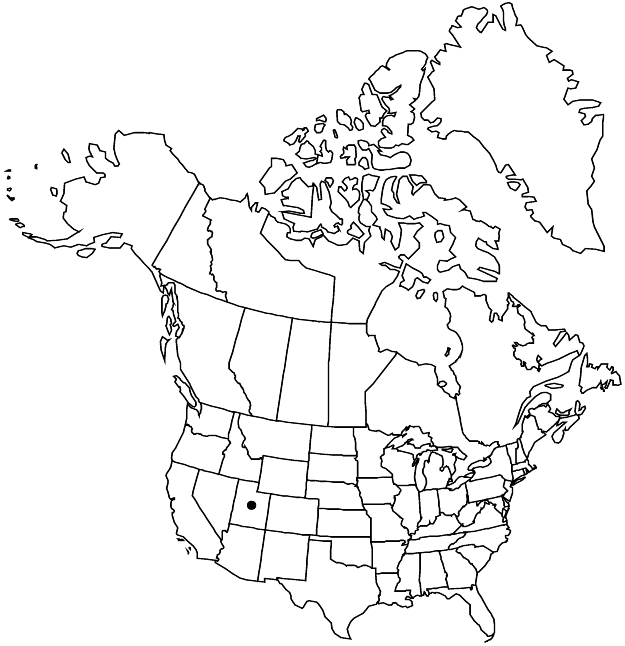Eriogonum panguicense
Proc. Utah Acad. Sci. 42: 291. 1966.
Herbs, matted, pulvinate or cespitose, scapose, 0.3–3 × 0.5–2 dm, glabrous, grayish. Stems spreading, usually with persistent leaf bases, up to 1/5 height of plant; caudex stems matted; aerial flowering stems scapelike, erect or nearly so, slender, solid, not fistulose, 0.2–2.5(–3) dm, glabrous, tomentose among leaves. Leaves basal, fasciculate in terminal tufts; petiole 0.1–0.8 cm, tomentose or glabrous; blade linear-oblanceolate to elliptic, 0.5–4(–5) × 0.2–1 cm, densely white-tomentose abaxially, floccose to subglabrous and greenish adaxially, margins plane or crenulate. Inflorescences capitate, 0.7–1.5 cm; branches absent; bracts 3, scalelike, triangular, 1–2 mm. Peduncles absent. Involucres 3–7 per cluster, turbinate, (2–)2.5–3 × 1.5–2.5 mm, glabrous; teeth 5, erect, 0.3–0.5 mm. Flowers 2–3 mm; perianth white, glabrous; tepals connate proximal 1/4–1/3, monomorphic, obovate; stamens exserted, 2–3 mm; filaments pilose proximally. Achenes light brown, 3–4 mm, glabrous.
Discussion
Varieties 2 (2 in the flora).
Eriogonum panguicense is an isolated species that may be related to the E. batemanii complex, or perhaps to E. lonchophyllum. It is a distinct taxon and worthy of horticultural consideration as a rock garden plant. The large (0.5–0.6 mm), oblong, deep purplish-red anthers against the whitish tepals are striking.
Selected References
None.
Key
| 1 | Leaf blades (1-)1.5-4(-5) cm; scapes 0.8-2.5(-3) dm; flowers 2-2.5 mm | Eriogonum panguicense var. panguicense |
| 1 | Leaf blades 0.5-1.5 cm; scapes 0.2-0.7(-1) dm; flowers (2-)2.5-3 mm | Eriogonum panguicense var. alpestre |
